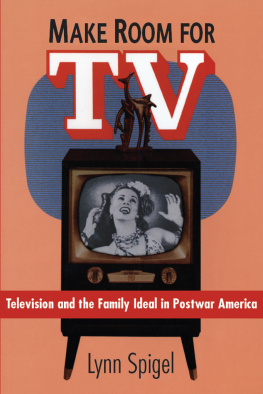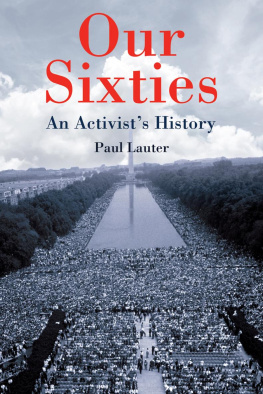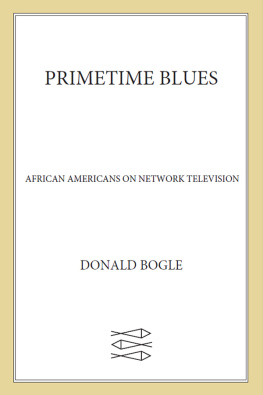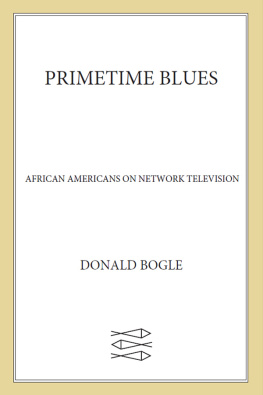First published 1997
by Routledge
711 Third Avenue, New York, NY, 10017, USA
Simultaneously published in the UK
by Routledge
2 Park Square, Milton Park, Abingdon, Oxon OX14 4RN
Routledge is an imprint of the Taylor & Francis Group, an informa business
Copyright 1997 Routledge
All rights reserved. No part of this book may be reprinted or reproduced or utilised in any form or by any electronic, mechanical, or other means, now known or hereafter invented, including photocopying and recording, or in any information storage or retrieval system, without permission in writing from the publishers.
Library of Congress Cataloging-in-Publication Data
The revolution wasnt televised: sixties television and social conflict / edited by Lynn Spigel and Michael Curtin.
p. cm.
ISBN 0-415-91121-4 (hc.) ISBN 0-415-91122-2 (pbk.)
1. Television broadcasting Social Aspects United States.
I. Spigel, Lynn. II. Curtin, Michael.
PN 1991.6.R47 1996
302.2345097309046dc20
9628782
CIP
ISBN: 978-0-415-91121-4 (hbk)
ISBN: 978-0-415-91122-1 (pbk)
lynn spigel and michael curtin
In 1974, Gil Scott-Herons The Revolution Will Not Be Televised blasted its way to popular fame on radio channels, assuring the nation that television was a medium of hopeless consensus, aimed at the white majority and suited only to reproducing the lackluster shop-a-day world of happy homebodies. Proclaiming that one day Green Acres, [the] Beverly Hillbillies, and Hooterville Junction will no longer be so damn relevant, Heron sang of a better world, better in part because, as he said in his famous last line, rather than being on TV, the revolution will be live.
Of course, television has always promised to be even bigger than life, and its penchant for producing an illusion of liveness has convinced many that its pictures are real and capable of capturing events, even revolutionary events, as they unfold. Still, Heron did have a point, because even though numerous revolutions were televised in the 1960s (think of the coverage of Watts, the Democratic Party Convention in Chicago, or the 1968 uprising in Paris), television preferred to label such rebellions as senseless riots staged by unruly mobs who reveled in self-destructive violence (and, obviously, the coverage of the 1992 Los Angeles Riots adheres to this tradition). So too, the networks presented the social movements of the 1960s less as a break with televisions general entertainment logic than as part of the flow of its something for everyone programming philosophy, from the zany military comedy of Gomer Pyle USMC to the Vietnam protest music of Joan Baez that played, after considerable doses of network censorship, on The Smothers Brothers Comedy Hour at the end of the decade.
As Herons hit single suggests, the 1960s is most notable for its culture vs. counter-culture, us vs. them logic, and within this set of oppositions, mass mediaespecially televisionwas almost always them. This opposition not only structured the logic of popular culture in that period, but it also runs through the more recent popular nostalgia for the decade. Given the fact that many historians of the 1960s lived through the time, it is perhaps no coincidence that these oppositions often permeate scholarly studies of the decade. Although nostalgia and history can never be clearly distinguished or separately defined, it does seem important to revisit the decade with some critical distance from the us vs. them paradigm, and to investigate how culture might be conceptualized in a less cartoonish way. This book, which is devoted to looking at television programs in the context of larger social, political, and cultural forces, attempts to understand the struggles that took place over representation on the nations most popular communications medium.
So popular was this medium that by 1960, just twelve years after the networks began to offer complete prime-time schedules, roughly 89 percent of the population had at least one television set. Over the course of the decade many households were busy exchanging their worn-out consoles for newer, groovier models like the Westinghouse Jet Set advertised in a 1966 issue of TV Guide as one of the fashionable tote-alongs designed to give each family member a portable receiver, custom-made for their own moveable viewing feast. But despite the emphasis on motion, by all estimations the average American was actually going fewer places because they were sitting in front of the set for about five hours a day. Indeed, by 1960 television was the countrys dominant form of entertainment and information. The speculations regarding its centrality in American households and public lifespeculations that had been so much part of the popular culture of the 1950swere now less and less the stuff of science fiction and more and more a practical reality of everyday experience.
By the latter half of the 1950s and throughout the 1960s, televisionas a media institutionwas in a period that might be called classical, a period in which production, distribution, and exhibition practices were standardized (albeit with some variation) and remained intact at least until the early 1970s. By the mid 1950s, the previous production center of New York (famous for live, theatrically-based TV) gave way to Hollywood, where major film studios, independent telefilm companies, and talent agencies like MCA grew to become the central forces behind prime-time production. Programs were produced by these Hollywood companies; distributed nationally and often owned or co-owned by the networks; sponsored by major corporate advertisers and their Madison Avenue representatives; regulated by the Federal Communications Commission (FCC); and received in the private homes of citizens across the country. The television industry furthermore established clearly standardized patterns of exchange, using the nationwide audience measurements of one company, the A.C. Nielsen Corporation, for box office data that it traded with sponsors who in effect financed the system. And, on the audience side, TV Guide, which became a national magazine in 1952, served as a source of scheduling information, and, perhaps more importantly, as a site of critical and fan discourse that bound individuals togetherat least in their imaginationsas a national audience of TV watchers.
In short, the 1960s saw the consolidation of what documentarian Michael Moore has more recently called a TV Nation. However, as numerous essays in this volume suggestfrom Victoria Johnsons exploration of the longstanding cultural denigration of Lawrence Welks middle-American do-gooder image to Roberta Pearsons investigation of the Native American response to the short-lived western Custernationalism was not a simple matter. Instead, numerous struggles took place in defense of specific group identities. Even as the networks attempted to standardize their affiliate markets and transform regional and ethnic differences into the common denominator of a national audience, they were often met by resistance at the local level.








